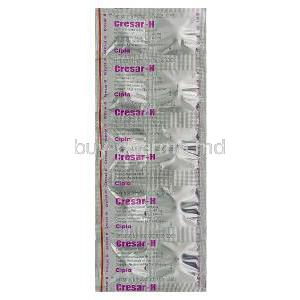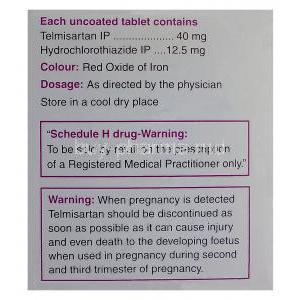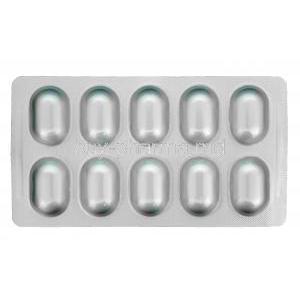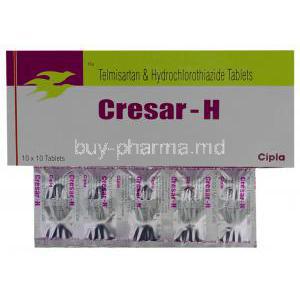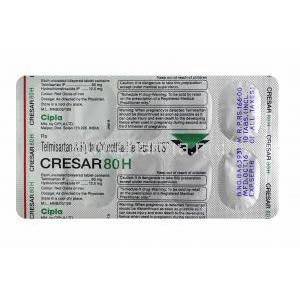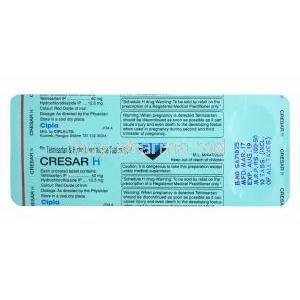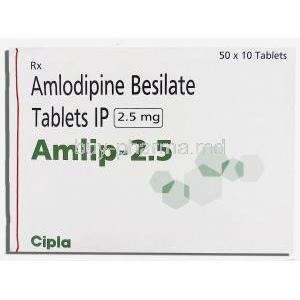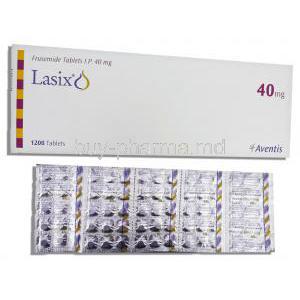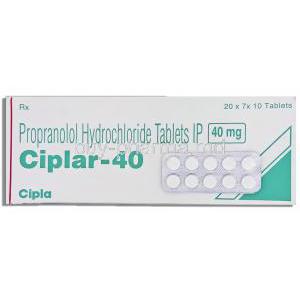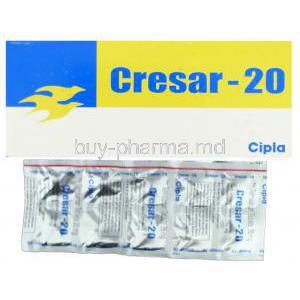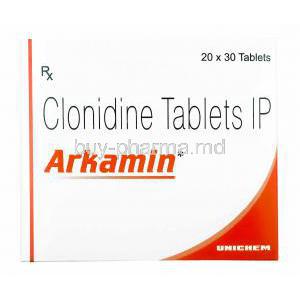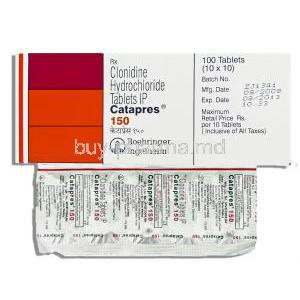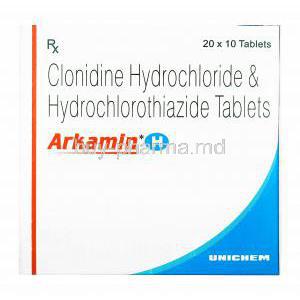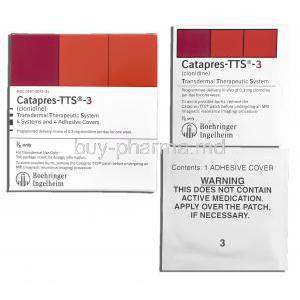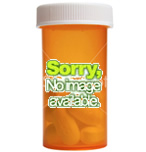Introduction
Overview of CRESAR H as an Antihypertensive Combination Drug
CRESAR H is a fixed-dose combination therapy that integrates the antihypertensive properties of telmisartan, an angiotensin II receptor blocker, with hydrochlorothiazide, a thiazide diuretic. This dual formulation is designed to achieve optimal blood pressure control in patients who may not respond adequately to monotherapy alone.
Clinical Significance of Managing High Blood Pressure with Dual Therapy
Uncontrolled hypertension is a major risk factor for cardiovascular morbidity and mortality. Employing two complementary mechanisms of action, CRESAR H offers a strategic advantage by targeting vascular resistance and fluid retention simultaneously. This dual strategy reduces blood pressure more effectively while minimizing long-term complications such as heart disease and kidney damage.
Brief Mention of Brand and Generic Availability
CRESAR H is widely available as both a branded and generic formulation, ensuring accessibility across different healthcare systems. Generic versions provide cost-effective alternatives while maintaining the same therapeutic efficacy and safety standards as branded products.
Composition and Formulation
Active Ingredients: Telmisartan and Hydrochlorothiazide
The tablet contains two pharmacologically active agents: telmisartan, an angiotensin receptor blocker (ARB), and hydrochlorothiazide, a thiazide diuretic. Together, they act synergistically to lower systemic blood pressure.
Strengths and Dosage Forms Available
Available strengths include varying ratios of telmisartan and hydrochlorothiazide to accommodate individualized treatment plans. The formulation is most commonly provided as oral tablets.
Role of Excipients and Formulation Design
Inactive components ensure tablet stability, bioavailability, and ease of administration. These excipients preserve drug integrity and support consistent therapeutic outcomes.
Mechanism of Action: How CRESAR H Works
Telmisartan: Angiotensin II Receptor Blocker (ARB) Mechanism
Telmisartan inhibits angiotensin II type 1 receptors, preventing vasoconstriction and aldosterone secretion. This leads to vasodilation, reduced vascular resistance, and decreased fluid retention.
Hydrochlorothiazide: Thiazide Diuretic Mechanism
Hydrochlorothiazide enhances sodium and water excretion through inhibition of sodium reabsorption in the distal renal tubules. This diuretic action lowers blood volume and reduces peripheral vascular resistance.
Synergistic Effect of Combination Therapy on Blood Pressure Control
The combination ensures complementary action: while telmisartan counteracts hormonal vasoconstriction, hydrochlorothiazide addresses fluid overload. This synergy produces superior antihypertensive efficacy compared to monotherapy.
Additional Metabolic and Renal Protective Effects
Evidence suggests that telmisartan may improve insulin sensitivity, while hydrochlorothiazide contributes to reduced cardiac workload. Together, they provide renal protection by stabilizing glomerular filtration pressure.
Approved Medical Uses
- Treatment of essential hypertension
- Reduction of cardiovascular risk in hypertensive patients with comorbidities
- Prevention of stroke, myocardial infarction, and progression of heart failure
Off-Label Uses
- Management of resistant hypertension requiring multiple agents
- Adjunct therapy in diabetic nephropathy
- Supportive therapy in chronic kidney disease
- Potential role in controlling hypertension associated with metabolic syndrome
Dosage and Administration
Standard Recommended Dosage for Adults
Typical starting dose involves a single daily tablet, adjusted according to patient response and blood pressure targets.
Titration Based on Clinical Response
Dose escalation or modification may be required in cases of insufficient response. Physicians tailor therapy based on blood pressure readings and patient tolerance.
Instructions for Administration (With or Without Food)
The tablet may be taken with or without meals. Consistency in timing of daily intake enhances therapeutic stability.
Missed Dose and Overdose Considerations
If a dose is missed, it should be taken as soon as remembered unless it is near the time for the next dose. Overdose may lead to profound hypotension and requires immediate medical intervention.
Administration in Special Populations
Elderly Patients
Elderly individuals may require dose adjustments due to altered pharmacokinetics and higher risk of orthostatic hypotension. Regular monitoring is recommended.
Pregnant Women
Use is contraindicated during the second and third trimesters due to risks of fetal renal impairment and developmental toxicity. Alternative therapies should be prescribed.
Nursing Mothers
Both telmisartan and hydrochlorothiazide may pass into breast milk. Caution is warranted, and discontinuation of nursing or the drug may be necessary.
Children and Adolescents
Safety and efficacy have not been firmly established in pediatric populations, and use is generally not recommended unless under specialist supervision.
Side Effects of CRESAR H
Common Side Effects
- Dizziness
- Fatigue
- Nausea
- Polyuria
- Muscle cramps
Less Common Side Effects
These may include symptomatic hypotension, hyperuricemia, and disturbances in electrolyte balance such as hypokalemia.
Serious Adverse Reactions
Rare but serious effects include angioedema, renal dysfunction, hepatic impairment, and arrhythmias. Immediate medical attention is advised if such events occur.
Patient-Reported Experiences and Tolerability
Overall tolerability is favorable, though some patients may discontinue due to side effects. Clinical follow-up ensures early identification of adverse outcomes.
Warnings and Important Precautions
- Increased risk of symptomatic hypotension in volume-depleted patients
- Regular monitoring of kidney and liver function
- Caution in individuals with diabetes, gout, or dyslipidemia
- Requirement for long-term monitoring in chronic therapy
Contraindications
- Hypersensitivity to telmisartan, hydrochlorothiazide, or sulfonamide derivatives
- Pregnancy in the second and third trimesters
- Severe renal impairment or anuria
- Severe hepatic impairment or cholestatic disorders
- Concomitant use with aliskiren in diabetic patients
Drug Interactions
Additive Effects with Other Antihypertensives
When combined with other blood pressure–lowering agents such as ACE inhibitors, beta-blockers, or calcium channel blockers, the effect of telmisartan and hydrochlorothiazide may be amplified. This can increase the risk of excessive hypotension, dizziness, or fainting episodes. Clinicians often monitor closely when dual or triple antihypertensive regimens are prescribed.
Interactions with Potassium Supplements and Potassium-Sparing Diuretics
Telmisartan has the potential to elevate serum potassium levels, particularly when used in conjunction with potassium-rich supplements, spironolactone, or eplerenone. The risk of hyperkalemia rises substantially, which can manifest as cardiac arrhythmias or muscle weakness. Regular electrolyte monitoring is recommended to mitigate this risk.
Lithium Toxicity Risk When Used Together
The concurrent use of lithium with CRESAR H increases the risk of lithium accumulation in the bloodstream. Toxic manifestations may include tremors, confusion, renal impairment, and even neurological disturbances. Close monitoring of lithium serum levels is critical if these drugs must be combined.
NSAIDs Reducing Antihypertensive Efficacy and Kidney Protection
Nonsteroidal anti-inflammatory drugs (NSAIDs), including ibuprofen and naproxen, can blunt the blood pressure–lowering effect of telmisartan. They also reduce renal perfusion, which may exacerbate kidney dysfunction. Long-term use of NSAIDs in hypertensive patients requires careful evaluation of benefits and risks.
Alcohol and CNS Depressants Enhancing Hypotensive Effects
Alcohol and central nervous system depressants such as sedatives or tranquilizers may potentiate the blood pressure–lowering effects of this medication. Patients may experience pronounced dizziness, impaired coordination, or fainting, especially when rising from a seated or supine position.
CYP-Mediated Interactions Affecting Telmisartan Metabolism
Although telmisartan undergoes minimal metabolism via cytochrome P450 enzymes, caution is warranted when administered with strong CYP modulators. Such interactions may subtly influence plasma concentrations and alter therapeutic response in susceptible patients.
Careful Administration
Patients with Renal or Hepatic Impairment
Reduced kidney or liver function alters drug clearance, heightening the risk of accumulation and adverse effects. In such patients, lower doses or alternative treatments may be warranted. Regular renal and hepatic panels are strongly advised during therapy.
Patients with Cardiovascular Comorbidities
Those with congestive heart failure, ischemic heart disease, or arrhythmias require vigilant observation. Hypotension induced by CRESAR H may compromise coronary perfusion, leading to worsening angina or cardiac decompensation.
Patients with Diabetes Mellitus or Electrolyte Disturbances
Hydrochlorothiazide may influence blood glucose and uric acid levels, while both components can disturb potassium and sodium balance. Diabetic patients and individuals prone to gout or hyponatremia require tailored monitoring.
Adjustments for Patients on Multiple Drug Regimens
Polypharmacy increases the likelihood of complex interactions. Adjustments in dosage or timing may be necessary when patients are on anticoagulants, hypoglycemic agents, or lipid-lowering therapies.
Overdosage and Management
Symptoms of Overdose
An overdose of CRESAR H typically manifests as profound hypotension, severe dehydration, electrolyte imbalance, and in extreme cases, renal failure. Neurological symptoms such as confusion or fainting may also occur.
Immediate Supportive Care
- Prompt gastric lavage if ingestion is recent
- Administration of intravenous fluids to restore blood volume
- Electrolyte correction to address potassium and sodium imbalances
Hospital Monitoring and Long-Term Follow-Up
Patients with severe overdose require intensive monitoring in a hospital setting. Continuous cardiac observation, renal function testing, and blood chemistry assessments are essential. Long-term follow-up ensures recovery of organ systems affected during the acute phase.
Handling and Storage Precautions
Recommended Storage Temperature and Protection from Moisture
CRESAR H tablets should be stored at controlled room temperature, ideally below 25°C. They must be kept in a dry environment, away from direct sunlight and humidity, to preserve potency.
Shelf-Life and Stability Considerations
The product should not be used beyond its expiration date as indicated on the packaging. Stability may be compromised if the tablets are exposed to moisture or extreme temperatures.
Safe Handling Instructions for Caregivers
Caregivers handling the medication should avoid crushing or breaking the tablets unless specifically instructed. Hands should be washed thoroughly after contact, especially when administering to elderly or vulnerable patients.
Disposal Recommendations for Unused or Expired Medication
Unused or expired tablets should not be discarded in household waste. They should be returned to a pharmacy take-back program or disposed of according to local regulations to prevent environmental contamination and accidental ingestion.
Cresar H, Telmisartan Hydrochlorothiazide FAQ
- What is Cresar H used for?
- What are the side effects of Cresar tablets?
- What class of drug is Cresar?
- Is it safe to take blood pressure medicine daily?
- What is Cresar H 40 mg used for?
- What is Cresar H 80 12.5 used for?
- What is telmisartan and hydrochlorothiazide used for?
- When is the best time to take telmisartan hydrochlorothiazide?
- What are the side effects of telmisartan?
- What to avoid when taking telmisartan?
- What are the most common side effects of hydrochlorothiazide?
- Is telmisartan a blood thinner?
- How long does it take for telmisartan to reduce blood pressure?
- What foods should you avoid while taking hydrochlorothiazide?
- What are the positive effects of telmisartan?
- Can telmisartan damage your kidneys?
- Can I drink coffee with telmisartan?
- Can I take vitamin D with telmisartan?
- Which is better, Losartan or telmisartan?
- What are the positive effects of hydrochlorothiazide?
- What type of medicine is telmisartan?
- What is the disadvantage of telmisartan?
- Can telmisartan reduce weight?
- What is the difference between telmisartan and telmisartan hydrochlorothiazide?
- How much weight can you lose with hydrochlorothiazide?
- Should I drink a lot of water when taking hydrochlorothiazide?
- What is the number one side effect of hydrochlorothiazide?
- What are the calming effects of telmisartan?
What is Cresar H used for?
The Cresar H Tablet is a medication used to treat high blood pressure, also known as hypertension. It's made up of two ingredients: Telmisartan and Hydrochlorothiazide.
What are the side effects of Cresar tablets?
- Drowsiness
- Ankle swelling
- Headache
- Dizziness
- Edema
- Hypertension
What class of drug is Cresar?
Angiotensin II receptor antagonists
Is it safe to take blood pressure medicine daily?
Yes
What is Cresar H 40 mg used for?
The Cresar H 40 Tablet is a medication designed to help manage hypertension or high blood pressure.
What is Cresar H 80 12.5 used for?
It is used to lower blood pressure by relaxing the blood vessels.
What is telmisartan and hydrochlorothiazide used for?
This dual therapy approach helps to manage hypertension, bringing blood pressure levels back under control.
When is the best time to take telmisartan hydrochlorothiazide?
Nighttime
What are the side effects of telmisartan?
- Vision changes
- Dizziness
- Ligheadedness
- Frequent urination
- Edema
What to avoid when taking telmisartan?
- Medicine that increases potassium levels
- ACE inhibitors
- NSAIDs
What are the most common side effects of hydrochlorothiazide?
- Stomach upset
- Tarry tools
- Bleeding gums
- Blistering
- Peeling
- Bloating
- Blood in urine
Is telmisartan a blood thinner?
No
How long does it take for telmisartan to reduce blood pressure?
2 weeks
What foods should you avoid while taking hydrochlorothiazide?
High-sodium foods
What are the positive effects of telmisartan?
- Anti-oxidative stress
- Anti-inflammatory response
Can telmisartan damage your kidneys?
Yes
Can I drink coffee with telmisartan?
Yes
Can I take vitamin D with telmisartan?
Yes
Which is better, Losartan or telmisartan?
Telmisartan
What are the positive effects of hydrochlorothiazide?
Hydrochlorothiazide is a drug used to treat hypertension. It's also helpful in reducing swelling that's related to health problems, like those affecting the heart, kidneys, or liver.
What type of medicine is telmisartan?
Angiotensin II receptor antagonist (ARB)
What is the disadvantage of telmisartan?
Telmisartan can cause dizziness. It's not uncommon for blood pressure medications to leave people feeling a bit off balance or lightheaded.
Can telmisartan reduce weight?
Yes
What is the difference between telmisartan and telmisartan hydrochlorothiazide?
Telmisartan is a single medication for blood pressure that relaxes blood vessels. The combination version is called telmisartan/hydrochlorothiazide. This one pairs telmisartan with hydrochlorothiazide, a diuretic often referred to as a water pill for a more powerful blood pressure-lowering effect.
How much weight can you lose with hydrochlorothiazide?
3.5 pounds after 10 weeks
Should I drink a lot of water when taking hydrochlorothiazide?
Yes
What is the number one side effect of hydrochlorothiazide?
Frequent urination
What are the calming effects of telmisartan?
Telmisartan appears to have an effect on anxiety by stopping signals in the brain.


